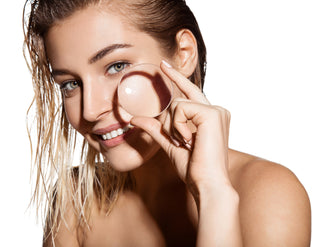Lifestyle choices and daily exposure to UV radiation and pollution are the leading cause of free radical damage and extrinsic aging of the skin.
Sagging skin, mottled tone, age spots, freckles, lines, wrinkles and dehydration are all signs of sun damage. But there is a time-tested and highly researched solution to sun damage woes: Vitamin A and its derivatives, retinol and retinyl palmitate. Every man and woman looking to improve the look of their skin should have a vitamin A product as part of their home care.
Vitamin A helps rejuvenate the skin by improving the texture and blood supply of the deeper collagen fibers, reversing damage caused by toxins such as smoking and irradiation from the sun, and it helps thicken the skin to improve fine wrinkling. For acne, the regenerative process prevents cellular debris from blocking the follicle opening and keeping the skin clear and refreshed. Sunscreen is mandatory for clients who want to rejuvenate with the benefits of Vitamin A.
Retinol’s derivatives are the more stable and gentle forms of vitamin A found in cosmeceuticals and over-the-counter skin care products, like our Revit-A-Liftcream and A+ Serum. It is important to understand that–like the prescription retinoids–they attempt to accomplish a similar goal, but have a different means to an end. For example, a retinoid, like tretinoin, is an all-trans-retinoic acid and begins the process of regeneration almost immediately. Retinol and retinyl palmitate must synthesize with different enzymes in the skin before achieving the regenerative results and will take longer for a result compared to a prescription. This is beneficial, because there is a more controlled result, increased product stability and minimal chance of an adverse skin reaction. Additionally, cosmeceutical percentages may be safely paired with alpha or beta hydroxy acids for accelerated anti-aging results.
A client will generally see his/her aesthetician more frequently than their doctor. At the Skin Rejuvenation Clinique, we treat clientele who are using prescription products and have had beautiful results with our signature protocols. Our primary goal is to achieve healthy, radiant and beautiful skin and help minimize skin conditions. We do this via communication. Acneic skin regimens should be simple. The use of the prescription retinol with salicylic acid, sulfur, benzoyl peroxide or resorcinol is not a good idea and can increase inflammation. However, pairing the retinoid with a good balancing cleanser, sunscreen and – if needed – an antibiotic for inflammation is a good regimen. Sun damaged or aged skin should combine a retinoid with a vitamin C serum, sunscreen, hydrator and balancing cleanser for optimal rejuvenation and youthful results.
The benefits prescription retinoids offer can be wonderful, but there are more concerns associated with the drug. The first use or over-use of the prescription can includes redness, burning, sun sensitivity, dryness and some peeling. These indications may warrant a lower dosage or less frequent use for a more healthy rejuvenation process. Another is the visually slick, pore-less and unnatural skin appearance of chronic retinoid users. If you or someone you know has used a prescription retinoid for over one year and presents these characteristics, help them balance their prescription use with cosmeceutical skin care and suggest if their physician would consider prescribing a lower dose. A 0.01 to 0.05% may be ideal for maintenance, where, a 0.25% is considered high and may be suggested for initial use to accelerate the rejuvenation process. Most case studies on tretinoin have lasted up to 2 years, depending on the percentage of product used and results achieved. However, most results may be achieved within 6 months and could be maintained with a lower concentration and less frequent use. Clients who have no tolerance or increased sensitivity to prescription strength retinoids may benefit from a cosmeceutical derivate for their skin’s needs.
Tina’s Tip
When using a prescription retinol cream like Retin-A or Renova for sun damage and age correction, your skin may become sensitized, peeling and dry. I have found that mixing the prescription retinol with our Advanced Recoverymoisturizer helps minimize the discomfort. In some cases, you may need to visit your doctor to try a different dose of retinol.
As skin care providers, understanding the differences between prescription and cosmeceutical is important for client education and helping them to achieve their skin care goals via a safe and effective means. Retinols do not exfoliate the skin directly, they promote epidermal regeneration to soften, thicken, brighten and smooth the skin from the signs of aging and acne. As a general rule, stop using retinol at least two days prior to a peel treatment. Sun damaged skin that is essentially “prepped” with the home use of retinol or alpha hydroxy acid may have a beautiful controlled result with glycolic, lactic or salicylic chemical peel treatments. Not all clients using a prescription retinoid or cosmeceutical retinol at home can tolerate a chemical peel treatment (or facial waxing service either). Depending on the severity of sun damage, clients may undergo a series of microdermabrasion treatments to accelerate the rejuvenation process; or for acne, consider a deep pore-cleansing facial with extractions.
Prescription vs. OTC–there are significant differences between the two, but when used correctly, the results are amazing.


